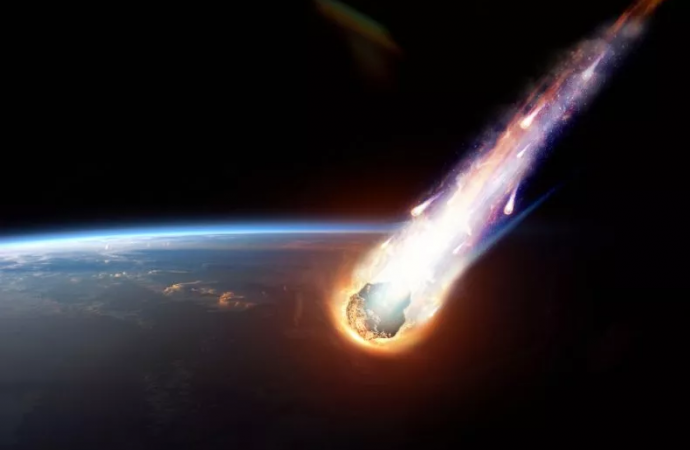Scientists may have significantly underestimated how often the early Earth was struck by asteroids, new research suggests.
Source: Newsweek
After studying small particles that are thought to have resulted from ancient impacts, researchers think it is possible that the number of these impacts may be up to 10 times higher than previously thought.
Simone Marchi, a principal scientist at the Southwest Research Institute in Colorado, and colleagues came to their conclusion by studying what are known as “spherules” found in very old rocks.
Marchi is due to discuss the findings in a presentation titled “Earth’s wild years” at the virtual Goldschmidt geochemistry conference on Friday.
Spherules are small glassy particles that were spread around the Earth following asteroid impacts in the past.
They occur because the force of the impact throws molten particles and vapors around, which then cool and fall back to Earth.
The bigger the impact, the more these particles would have traveled from the impact site. Some individual asteroid impacts may have been city-sized and bigger than the one that led to the extinction of the dinosaurs, according to a Goldschmidt conference press release previewing Marchi’s presentation.
In a statement, Marchi said he and colleagues had developed what is called an impact flux model which is what allowed them to conclude there were more ancient asteroid impacts than previously thought. It works by using direct evidence of impacts from ancient rocks.
He said: “With this approach, we found that current models of Earth’s early bombardment severely underestimate the number of known impacts, as recorded by spherule layers.
“The true impact flux could have been up to a factor of 10 times higher than previously thought in the period between 3.5 and 2.5 billion years ago.
“This means that in that early period, we were probably being hit by a Chicxulub-sized impact on average every 15 million years.”
The Chicxulub impact is the name given to an asteroid strike that occurred around 66 million years ago which is thought to have caused the extinction of 75 percent of life on Earth, including non-avian dinosaurs, according to the Institute of Geophysics at the University of Texas.
Marchi added the research may help scientists understand if such asteroid impacts may have affected the development of oxygen in the atmosphere.
And Rosalie Tostevin of the Department of Geological Sciences at the University of Cape Town, who was not involved in the work, said in the Goldschmidt conference press release: “Unfortunately, few rocks from this far back in time survive, so direct evidence for impacts, and their ecological consequences, is patchy.
“The model put forward by Dr. Marchi helps us to get a better feel for the number and size of collisions on the early Earth.”
Marchi told Newsweek a paper on the topic has been submitted to a journal for review and is the result of a “worldwide collaboration.” He has authored a book, Colliding Worlds, on the effect of asteroid impacts on the development of life on Earth.
Source: Newsweek

































Leave a Comment
You must be logged in to post a comment.